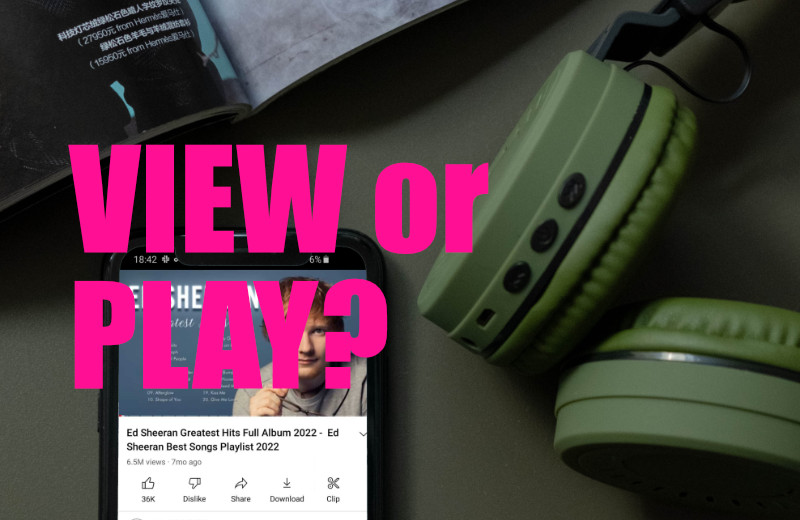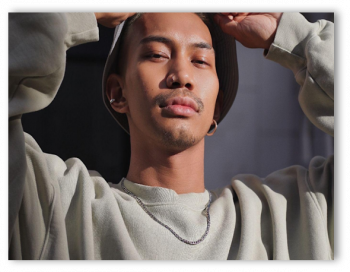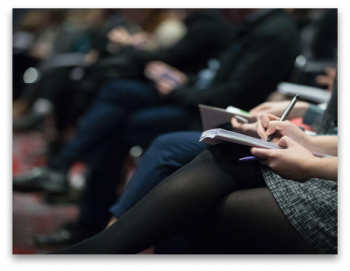Interview with MediaCom – How Do You Run Effective Contextual Ads and Protect Your Brand in the Largest CGC Video Platform? GP Solves the problem

As user ID-based targeting (cookies, IDFA, etc.) has become more difficult, contextual targeting, which allows ads to be placed in related content, has been gaining traction. GP, a new innovative business unit within Freak Out Holdings, has made not only more effective contextual targeting but also allows brands to more closely align with the content they buy and ensure brand safety. In this article, Ken Ishise, Head of Japan at GP, talks to its agency partner, Atsushi Morita, Senior from MediaCom, about the challenges he faced and how GP helped him overcome them.
YouTube is now an essential component of any media mix
Ken Ishise: GP, the latest wholly owned subsidiary of Freakout Holdings, provides in-video contextual intelligence and targeting on top of YouTube Ads. Today, I’d like to speak with Mr. Morita, Senior Planner at MediaCom, a GroupM company, which has firsthand experience with GP’s solutions. First and foremost, Mr. Morita, please tell us about your mission and the areas in which you are in charge.
Atsushi Morita: GroupM is a holding agency operating worldwide within WPP. As a media planner, I am currently in charge of a wide range of responsibilities, including campaign proposal, planning, and execution for each client, as well as results verification and reporting.
A lot of our clients are multinational brands, and we are able to fully demonstrate our competence, in a fast-paced global environment, in which you are expected to provide local expertise and make quick decisions. Because we manage not only digital media buying but also many aspects of a brand, we almost act as an extension of the team to build strategies and execute campaigns with a common goal in mind.
Ken: That is one of the most exciting things about working for a global holding company. Can you then explain how your team handles media planning, and any specifics for when YouTube is part of the plan?
Morita: Media selection is critical in planning. Currently, YouTube accounts for a great share of our clients’ digital advertising budgets, and it is an essential medium, no doubt. Unlike TV ads, Youtube not only gives brands better visibility in ROI but has a massive user base, not to mention the benefit of being able to deliver targeted advertisements. Nonetheless, as its influence expands, so do the obstacles it faces.
What are some of the challenges for marketers when advertising on YouTube?
Ken: What challenges have you observed in Youtube ads?
Morita: With the proliferation of wireless phones and Bluetooth in recent years, there have been more opportunities to listen to YouTube content.,I have felt in my own experience that there have been more opportunities to listen to ads instead of watching them,. For example, when I am listening to music on Youtube and an ad starts playing, I wonder if this constitutes “view”. I have my doubts.
More recently, I’ve been considering the relevance of the ads to the content, as well as whether audience targeting, which Google promotes and marketers adore, is actually adequate. Specifically, I am seeing an increase in the number of ads that appear on my device that are either irrelevant to me or clearly not intended for me. It’s audience targeting, so it’s understood that the content and advertisements sometimes do not match, but in many cases, I am just not the intended audience for those advertisers, such as mobile gaming apps, which I have seen a lot but I have zero passion for. We reasoned that this could be because the definition of affinity* audience is ambiguous and opaque, and you can never be certain as a marketer that you are using the correct affinity segments.
*Affinity is a type of audience targeting that is based on user historical activities on Google media properties and can be used in YouTube advertising.
After witnessing this situation firsthand, I began to question whether what I had proposed to my clients in the past was the best course of action. I started to have second thoughts.
Consumer data privacy trends and YouTube policy changes should not be overlooked.
Ken: Micro-targeting with user-level IDs is becoming more technologically limited. This is also true for video advertising. It was a new initiative within our company, as an ad tech company, to innovate a new targeting technology that did not rely on user-level ID.
YouTube’s policy changes, which went into effect in June 2021, have also resulted in additional GP feature development. Among the many changes made by YouTube, ads will now be served on newly created channels.
New channels have no track record of content, no idea of the channel’s continuity, and far less confidence in its quality. In other words, serving ads to video content through new channels increases the risk of brand misalignment and potential for reputational damage. This is why we also built stronger brand safety tools that can reliably understand in-video content.
GP was “the perfect product.”
Ken: Mr. Morita, could you please tell us how you came to use GP?
Morita: For starters, there was an ever-increasing demand from clients to better serve ads to the right target audience. Furthermore, I wanted to solve a dilemma that I had personally experienced, and I was looking for a solution.
I was already skeptical of Affinity targeting’s ability to reach the right audience.
In addition, as Mr. Ishise mentioned, third-party cookies will be phased out in Google Chrome by 2023, indicating that the advertising industry has reached a tipping point in terms of consumer data privacy. As cookie-free and id-free methods become more common and audience-based targeting becomes less common, GP was the perfect product to allow contextual targeting on YouTube.
Approximately 80% of respondents stated that they recognized the ads.
Ken: Could you please elaborate on your previous GP’s use case? You collaborated with GP to execute a contextual campaign on Youtube for a global sports brand.
Morita: The client’s request was challenging: “We want to ensure that the ads are targeted to young people who are actually using our product in sports competitions,” but we were confident that GP could make it happen. We proposed a GP-enabled campaign that used AI to target specific YouTube videos that were contextually relevant and captured the target audience.
We conducted a survey of the targeted young adults through a third-party research organization after the campaign to measure its effectiveness. To our surprise, approximately 80% of the respondents said they recognized our ad campaign or had seen the creatives. Also, when asked, “Where did you see the ad?,” the vast majority of responses were in fact “YouTube,” where the ads were served via GP. The campaign was a difficult request at first, and there was a lot of anxiety, but after receiving the amazing survey results, we were overjoyed and celebrated the success.
Ken: We concentrated on thoroughly minimizing the risk of brand damage as well as on contextual targeting (conquesting) strategies in response to the client’s request: how to gain mindshare from young consumers who consider competing products. There are limitations to conventional audience targeting in achieving these campaign objectives, and I believe we were able to fulfill them because of our proprietary contextual intelligence.
We want to create a safe and secure environment where everyone can enjoy YouTube.
Ishise: What are your future expectations for GP, Morita-san?
Morita: Marketing strategies are rapidly evolving, influenced by current trends, public opinion, and global events. Currently, the number of social media platforms that monetize through ads, including YouTube, is on the rise, and users can enjoy expressing themselves freely on their preferred platforms. As a media-buying agency, we must watch out for content that contains flaming/roasting and any other offensive expressions because your ads can be served on there.
Our planners are always on the lookout for technologies and services that maximize the scale and effectiveness while protecting the client’s brand image.
In this context, we hope that GP’s technology, products, and services will continue to assist us in solving the various challenges that advertisers are currently facing.
Ken: We will always be there for you.
By analyzing in-video content (narratives and conversations), we actually identify videos that may cause brand damage. Furthermore, GP can detect and block content that can generate a high view rate but is not actually being viewed by users, i.e., long form music, and ensure brand-safety and viewability on YouTube.
Children frequently watch YouTube on their parents’ mobile devices, but the question of whether the ads they see are appropriate for children arises on a daily basis. We hope that by implementing GP, we will be able to provide a safe and secure environment for everyone to enjoy YouTube.
To our delight, GP is already collaborating with top brands, domestic and international, in the luxury, consumer goods, and consumer electronics industries. We intend to build on our success by expanding our global footprint as well as continuing to strengthen our partnership with GroupM and other agency and holding company partners.
Mr. Morita, thank you very much for your time today.



